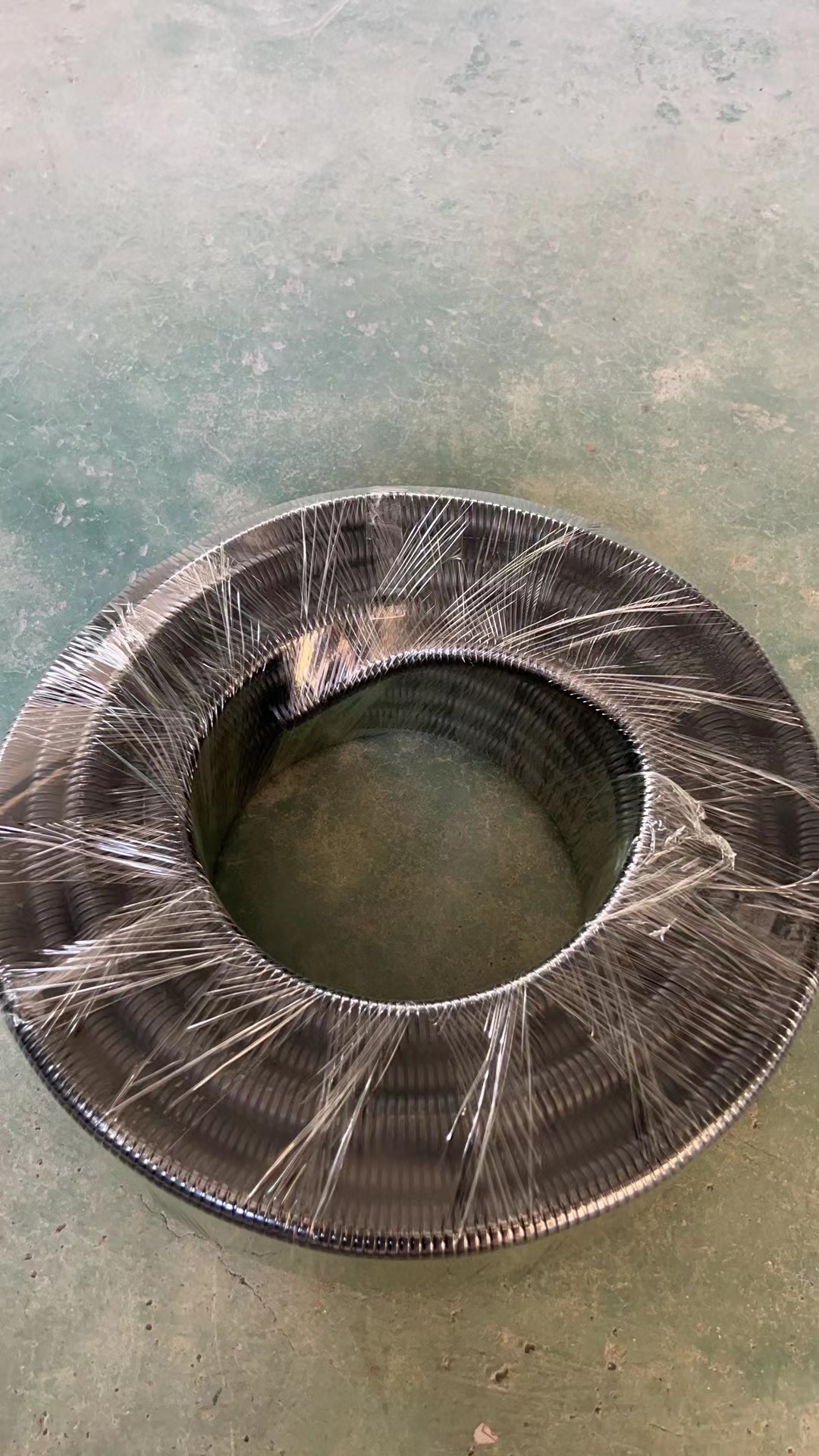 831
831
Flexible conduits are used to connect to motors or other devices where isolation from vibration is useful, or where an excessive number of fittings would be needed to use rigid connections. Electrical codes may restrict the length of a run of some types of flexible conduit.
Flexible metallic conduit (FMC, informally called greenfield or flex) is made by the helical coiling of a self-interlocked ribbed strip of aluminum or steel, forming a hollow tube through which wires can be pulled. FMC is used primarily in dry areas where it would be impractical to install EMT or other non-flexible conduit, yet where metallic strength to protect conductors is still required. The flexible tubing does not maintain any permanent bend, and can flex freely.
FMC may be used as an equipment grounding conductor if specific provisions are met regarding the trade size and length of FMC used, depending on the amperage of the circuits contained in the conduit. In general, an equipment grounding conductor must be pulled through the FMC with an ampacity suitable to carry the fault current likely imposed on the largest circuit contained within the FMC.
Liquidtight flexible metal conduit (LFMC) is a metallic flexible conduit covered by a waterproof plastic coating. The interior is similar to FMC.
Flexible metallic tubing (FMT; North America) is not the same as flexible metallic conduit (FMC) which is described in US National Electrical Code (NEC) Article 348. FMT is a raceway, but not a conduit and is described in a separate NEC Article 360. It only comes in 1/2" & 3/4" trade sizes, whereas FMC is sized 1/2" ~ 4" trade sizes. NEC 360.2 describes it as: "A raceway that is circular in cross section, flexible, metallic and liquidtight without a nonmetallic jacket."
Liquidtight flexible nonmetallic conduit (LFNC) refers to several types of flame-resistant non-metallic tubing. Interior surfaces may be smooth or corrugated. There may be integral reinforcement within the conduit wall. It is also known as FNMC.
Conduit may be installed underground between buildings, structures, or devices to allow installation of power and communication cables. An assembly of these conduits, often called a duct bank, may either be directly buried in earth, or encased in concrete (sometimes with reinforcing rebar to aid against shear forces). Alternatively, a duct bank may be installed in a utility tunnel. A duct bank will allow replacement of damaged cables between buildings or additional power and communications circuits to be added, without the expense of re-excavation of a trench. While metal conduit is occasionally used for burial, usually PVC, polyethylene or polystyrene plastics are now used due to lower cost, easier installation, and better resistance to corrosion.
Formerly, compressed asbestos fiber mixed with cement (such as transite) was used for some underground installations. Telephone and communications circuits were typically installed in fired-clay conduit.


